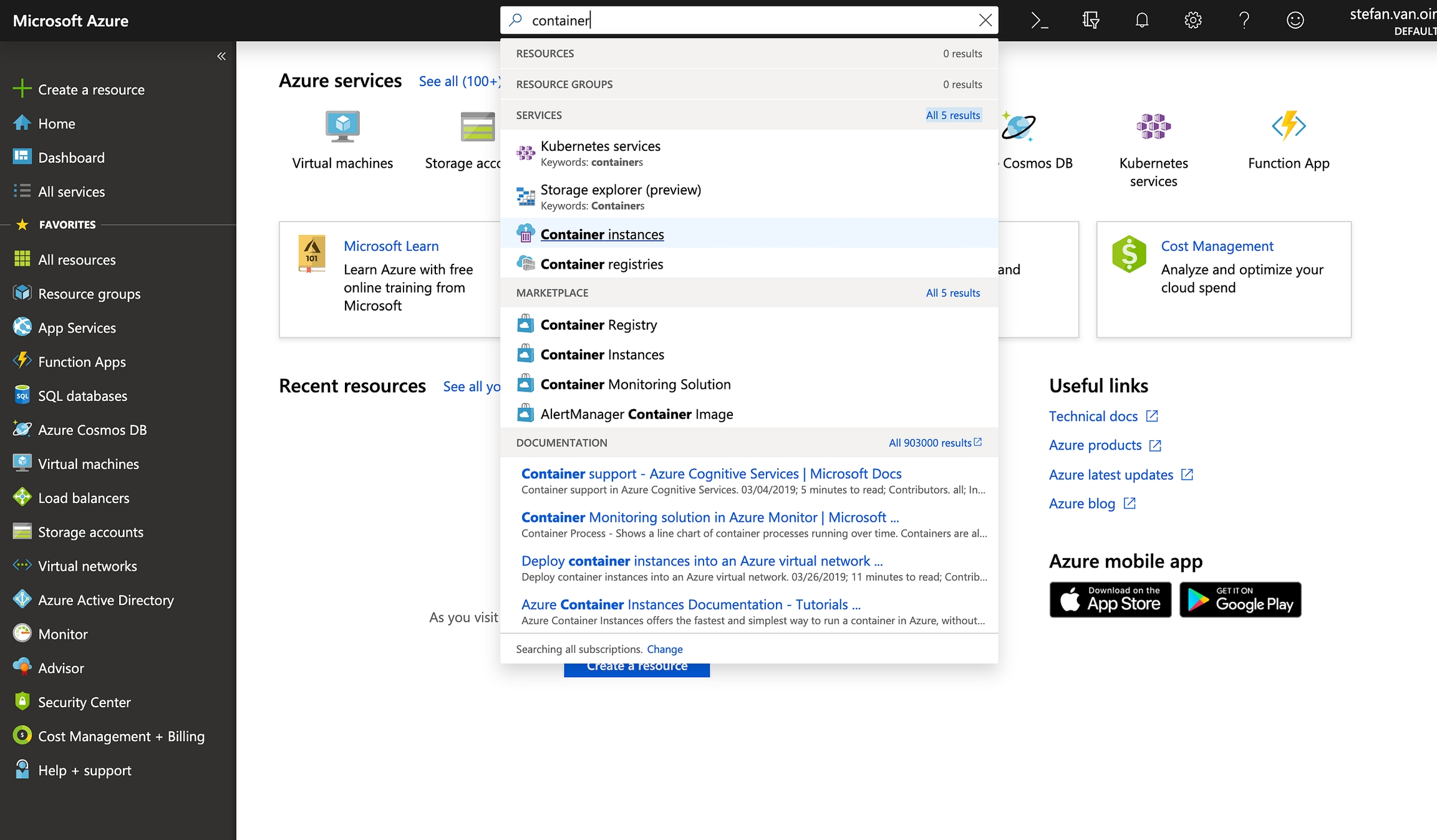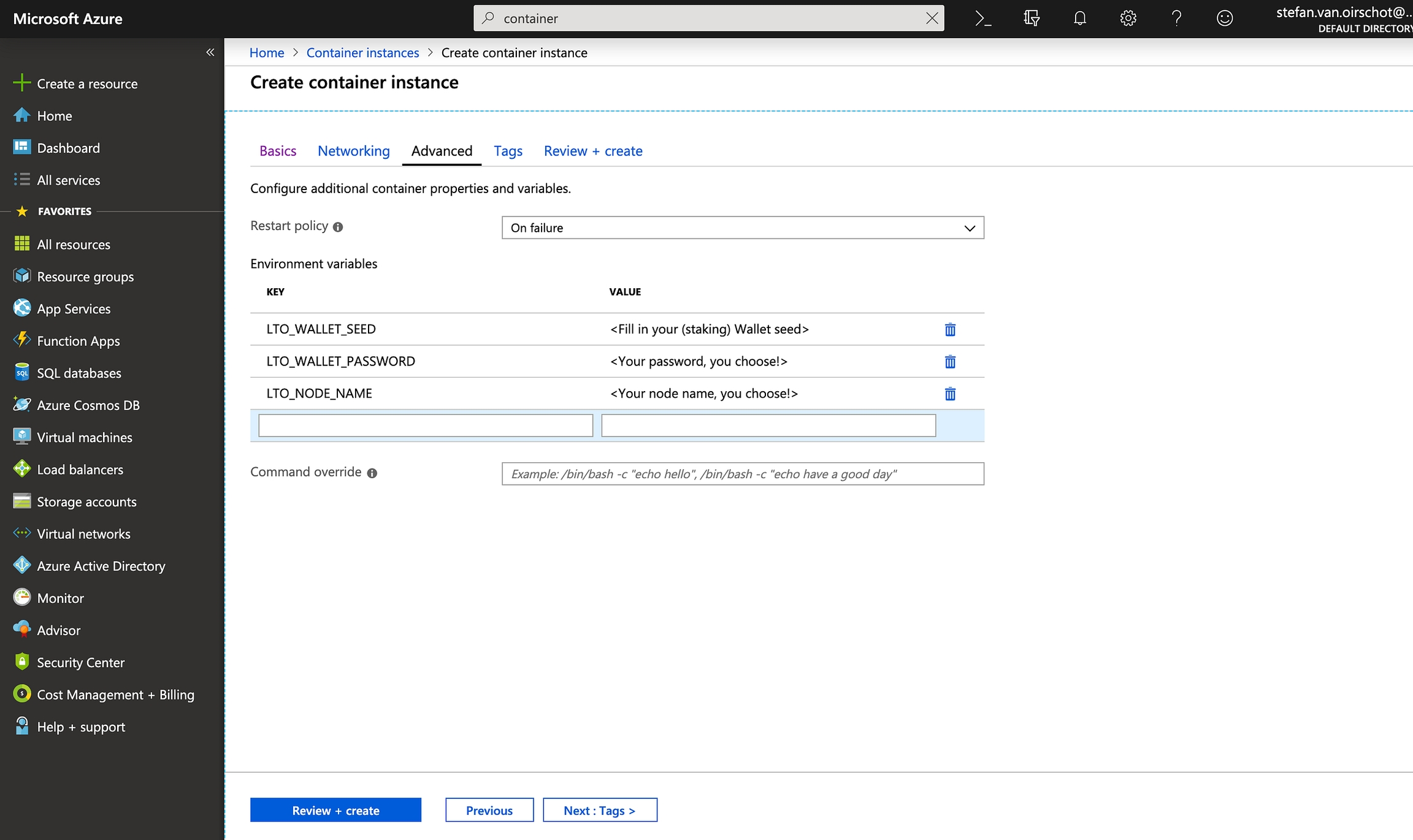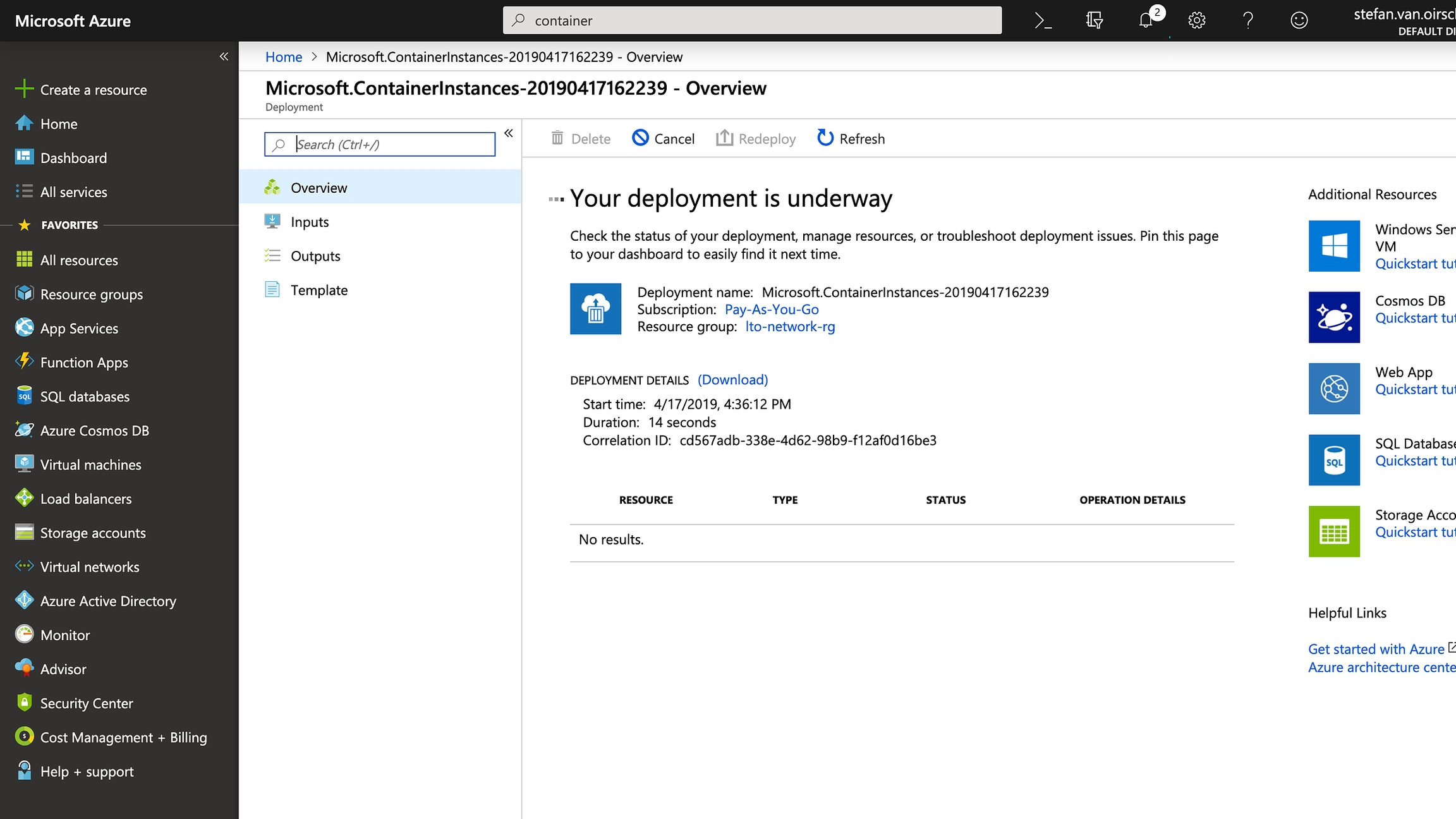Microsoft Azure
This page shows the 2 steps needed to get an LTO Network node up and running using Microsoft Azure, specifically Azure Container Instances (Not to be confused with Azure Kubernetes Services).
So you decided you want to be part of the LTO Network, awesome!
A great way to be part of the community is by actively participating as a node in the network.
Make sure to check out the Prepare: Setup your wallet page before continuing. The node setup pages assume you utilize a 2-wallet setup for extra safety.
Below the 2-step setup procedure using the browser there is an optional procedure for using the command-line interface.
Step 1: Deploying your node on Azure using the browser interface

As mentioned before we’re configuring a Container instance using ACI. This is not to be confused with AKS, Azure Kubernetes Services. AKS can be used to setup a cluster for container orchestration. This is overkill for what we’re trying to achieve at this time.
Please type “container” (without an s) in the box and “Container instances” will appear. Click Container instances.

First step is to configure some basic settings for your new container instance. You can not really go wrong here. The subscription entry displayed will display on your Azure subscription. You might need to create a Resource group using create new. Please name your container, select a Region where you want to host your container and make sure to enter the image namecorrectly. Before going to the next step we need to change 1 more thing.

Let’s boost the memory a little from 1.5 GB default to 2 GB by clicking Change size. Now click on Next: Networking to go to the next step.

Wow, this one is easy. We don’t need to change anything here. Maybe you want to enter the DNS name label. It’s up to you. This is not a requirement. No ports need to be added at this point. You can leave it at default.
Please click Next: Advanced so we can start configuring our node.

Alright at this stage you want to configure your LTO_WALLET_SEED. This is an important step. This should be the seed of the wallet you use for staking. We configure the LTO_WALLET_PASSWORD to encrypt the seed. The LTO_NODE_NAME is the name your node will use to identify itself on the LTO Network.
When you’re done putting in these variables click on Review + create.

If validation is successful click Create to create your container and wait for the deployment to finish.

The deployment might take 1–2 minutes to complete.

Your LTO Public Node is now running on Azure using Azure Container Instances. Not convinced? Let’s double check :) Please click on Go to resource.

Let’s click on Containers under Settings. Now click on Connect and select a bash shell to Connect. A terminal will open. Activate the terminal by clicking on the black screen.
Using the cd (change directory) command we will browse to the /lto/log directory. In this directory you’ll find our logfile called: lto.log.
Start a tail like in the above screenshot and follow the progress as your node downloads the blockchain or maybe is already adding MicroBlocks.

That’s it. You’ve successfully mastered setting up a LTO Network public node on Microsoft Azure. Awesome!
Step 2: Wait for a 1.000 blocks
You can find the LTO Network Explorer at https://explorer.lto.network. It shows you the blocks generated, by who, when, how big they are and how many transactions are in the block.
After launching your node check the Explorer to see the number of the last block. Wait till another 1.000 blocks are generated and expect your node to be part of the LTO Network.
Depending on your stake (the number of LTO tokens you have in the “2nd wallet”) it will take more or less time for you to start earning LTO. Be patient and be happy. Welcome to the amazing LTO Network community! Read more about community programs.
Optional: Deploying your node on Azure using the cmd-line interface
Optionally you can start your container using the command-line interface. A big advantage of using the CMD is that you can automate everything.
Use the following commands to kick-off your LTO Network Public node using command line:
With just these two commands you have successfully launched your LTO Network Public node container application. Using the following command you can view your nodes progress:
You can double check your environment variable configuration using the following commands:
Last updated